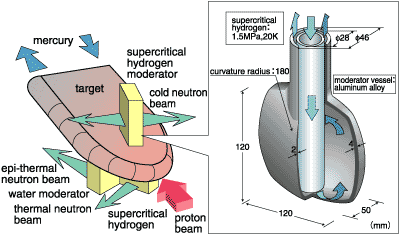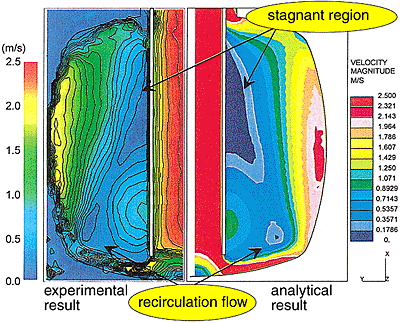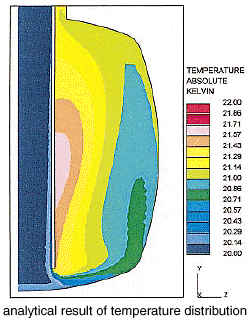In the spallation target system, the moderator is an important component that directly affects neutronic performance (Fig. 3-7). In particular, we are developing a cold moderator using supercritical hydrogen which aims at the highest neutronic performance
(5 x 1012 n/cm2/sr/MW) in the world. In order to realize such a cold moderator, it is necessary to suppress the local temperature rise of hydrogen in the moderator vessel, which affects neutronic performance. A full-scale model made of acrylic resin, simulating the inner structure of the moderator vessel, was fabricated to measure flow patterns affecting the temperature rise. Flow patterns measured by a PIV (Particle Image Velocimetry) system showed recirculation flows and stagnant flow regions that were induced by the impinging jet flow. Also, analytical flow patterns predicted with a design code agreed very well with the experimental results (Fig. 3-8).
The thermal-hydraulic behaviors of hydrogen in the moderator vessel were estimated with the design code. It is possible to limit the local temperature rise to within 3K, which is indispensable for realizing high neutronic performance under 2 MW proton beam operation (Fig. 3-9). Currently, we are improving the structural design of the moderator vessel to secure a much higher neutronic performance. |


